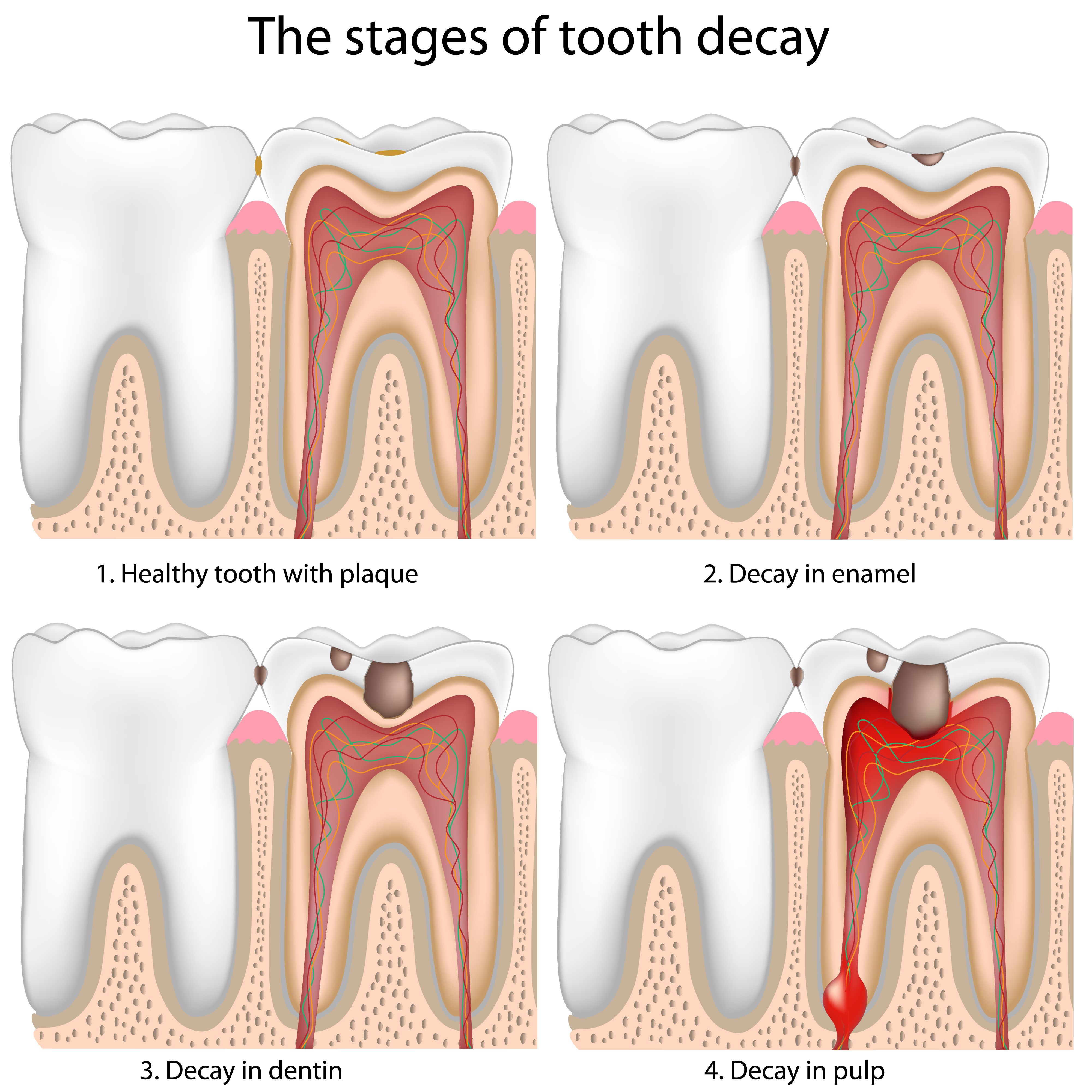The Five Stages of Tooth Decay
 At Artistic Expressions Dentistry, Dr. Bruce Wilderman and his team of dental experts strive to provide their patients with the education they need to maintain excellent oral health in between visits to their restorative dentistry, general dentistry, and cosmetic dentistry practice. When it comes to taking the best possible care of your teeth and gums, knowledge truly is power, which is why Dr. Wilderman places such emphasis on the importance of patient education.
At Artistic Expressions Dentistry, Dr. Bruce Wilderman and his team of dental experts strive to provide their patients with the education they need to maintain excellent oral health in between visits to their restorative dentistry, general dentistry, and cosmetic dentistry practice. When it comes to taking the best possible care of your teeth and gums, knowledge truly is power, which is why Dr. Wilderman places such emphasis on the importance of patient education.
One of the topics Dr. Wilderman commonly discusses with patients is tooth decay and how to recognize it in its earliest stages. In discussing the stages of tooth decay at his Philadelphia, PA dental practice, he stresses to patients that they should seek treatment at the first signs of potential decay, when it most easily treated. By the time tooth decay reaches its more advanced stages, root canal therapy or even extraction may be necessary.
If you are interested in receiving treatment from a dentist who truly cares about the well being of his patients, we encourage you to schedule your initial consultation with Dr. Bruce Wilderman at Artistic Expressions Dentistry today.
What Are the Stages of Tooth Decay?
As with most oral health problems, the early stages of tooth decay produce few obvious symptoms. For this reason, it is important to be acutely aware of the stages of tooth decay and to be particularly attentive to the appearance of the teeth. It is equally important to visit the dentist at least twice a year as recommended by the American Dental Association for professional cleanings and oral exams. It is often during these twice-a-year appointments that the early stages of tooth decay are identified.
Tooth decay can be broken down into five basic stages:
- Demineralization: Tooth decay begins with the demineralization of a tiny portion of the surface of the tooth. This early stage of tooth decay often takes the form of a white or brown spot on the enamel. If tooth decay is caught at this point, steps can be taken to remineralize the enamel and reverse the damage.
- Enamel erosion: If treatment is not received at the demineralization stage, bacteria will continue to wear down the enamel of the teeth until it begins to erode. At this point, the underlying layer of the tooth, the dentin, will become exposed. This layer of the tooth contains thousands of microscopic tubules leading directly to the nerves of the tooth, resulting in tooth sensitivity. Treatment is still very possible at this stage, usually through the removal of decayed material and the placement of a tooth-colored filling, inlay, onlay, or crown.
- Dentin erosion: The dentin layer of the tooth is nowhere near as strong or as resistant to decay as the enamel. Once bacteria reaches the dentin, treatment becomes a far more urgent matter, as the pace of decay will increase. At this point, treatment with a filling, inlay, onlay, or crown is still possible, but the treatment window is rapidly closing.
- Dental pulp infection: Eventually the decay will reach the root canal or canals at the center of the tooth. Contained within each root canal is a substance called dental pulp, which is rich in nerves, blood vessels, and nutrients essential to the health of the tooth. When this pulp becomes infected, it must be surgically removed in order to salvage the tooth. The root canal must then be disinfected and the tooth must be sealed and covered by a dental crown.
- Abscess formation: If root canal therapy is not performed in a timely manner, the infection will spread to the tip of the tooth root. From there, it can move to other structures, including the jawbone, the gums, and even adjacent teeth. An abscess will form at the base of tooth, often accompanied by severe pain. At this point, there is a chance that the tooth can still be salvaged via root canal therapy; however, tooth extraction is a genuine possibility. If left untreated, the tooth will inevitably die.
Learn More about the Stages of Tooth Decay
To learn more about tooth decay and its treatment, please contact Artistic Expressions Dentistry today.


